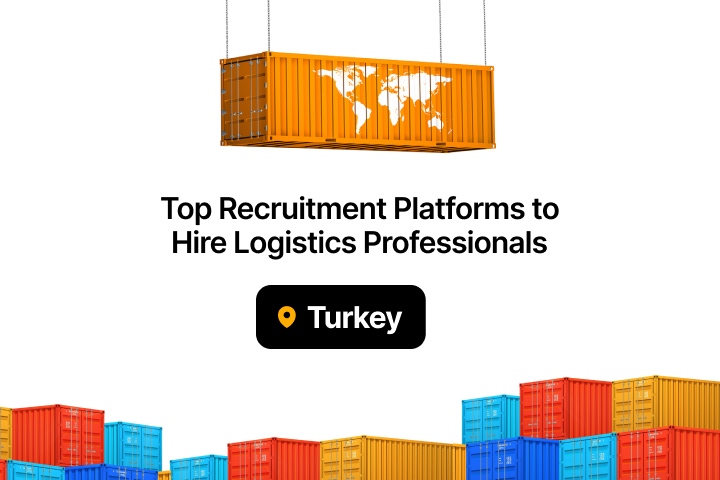Access to skilled talent is the number one challenge HR leaders face today. With roles evolving rapidly and competition for qualified candidates intensifying, organizations can no longer simply post openings and hope the suitable applicants surface. This challenge is especially pronounced in the UAE, where a recent survey found that 24% of employers need more essential skills, particularly in sales and marketing.
Instead, leading companies are pursuing talent pipelines - pools of prospective hires sourced proactively and nurtured for future job requisitions.
Robust talent pipelines deliver major competitive advantages. They provide a readily available source of qualified, interested candidates to fill open roles faster. Talent pipelines dramatically accelerate hiring velocity, reduce costs per hire, and enhance long-term retention.
This guide will cover everything HR managers, recruiters, and business leaders need to know to build a robust talent pipeline, including:
- What is a talent pipeline and its key benefits
- Steps to create an effective talent pipeline
- Expert tips for sustaining your pipeline
- The role of technology like Qureos in scaling your efforts
Let’s get started!
What Exactly is a Talent Pipeline?
A talent pipeline is an inventory of qualified, interested candidates who can move seamlessly into open roles when needed. It includes the entire candidate lifecycle, from initial prospecting and relationship-building with passive candidates through interviewing, vetting, and nurturing top talent over time.
In other words, a talent pipeline is a proactive and strategic approach to finding, developing, and retaining tomorrow’s leaders well before actual hiring needs.
It’s the opposite of reactive recruiting, which involves scrambling to source candidates only after a position opens up. With robust talent pipelining, companies have ideal, ready-to-go candidates queued up.
Also read: What is rightsizing?
6 Benefits of Building a Strong Talent Pipeline
Constructing an effective talent pipeline comes with many benefits:
1. Dramatically Reduces Time-to-Hire
The deeper the bench of qualified talent to choose from, the faster roles can be filled. Companies with mature talent pipelines report slashing average time-to-hire by up to 50%. Rather than going through full recruiting and interview cycles, hiring managers can immediately tap pre-vetted prospects from the pipeline who are primed to take on challenges.
2. Lowers Cost-Per-Hire
Investing in talent cuts costs in multiple ways. First, maintaining ongoing relationships with prospects is more affordable than continuously paying to source new candidates with each opening. Second, pipelined talent typically already goes through initial screening and interviews, reducing expenditures on assessing each new applicant. Finally, reducing vacancy spells lowers productivity losses associated with unfilled roles.
An essential part of optimizing these costs is understanding how to calculate cost per hire effectively, which helps evaluate the financial efficiency of the talent pipeline strategy. Companies that cut costs and invested in talent throughout 2020 realised an average 8.2% increase in 4Q20 revenue, which for S&P 500 companies translates to a more than $500 million increase in revenue. This reflects a solid foundation for sustained future recovery and revenue growth.
Also Read: What is Compa-Ratio?
3. Improves Quality-of-Hire
When roles open up, companies with solid talent pipelines have an advantage in selecting the very best candidates from the bench. Integrating AI Recruiting Tools in this process has further enhanced the ability to identify top-tier candidates. These tools apply advanced analytics and machine learning to assess candidate qualifications more comprehensively, ensuring a perfect fit for the role. Rather than settling for the best available talent sourced on tight deadlines, organisations can carefully choose from already vetted prospects who meet all prerequisites. This systematic process improves quality-of-hire.
Also Read: What is Equity Theory?
4. Enhances Candidate Experience
A talent pipeline fosters positive candidate experiences through continuous nurturing. Prospects in the pipeline receive ongoing communication and developmental opportunities, keeping them warm until the right role opens up. This level of care leaves a lasting impression and differentiates the employer brand.
Also Read: How Companies can Improve Candidate Experience
5. Boosts Retention and Engagement
The deep relationships built through talent pipelines make candidates feel invested in the organisation long-term. For instance, LinkedIn's 2020 Global Talent Trends report found that internal hires, often sourced from talent pipelines, typically ramp up 50% faster than external hires and are 18% more likely to remain with the company after three years. This indicates that candidates from talent pipelines, including internal talent pools, adapt quicker and demonstrate higher long-term retention compared to those hired externally. They have greater role clarity, understand the culture, and feel more connected to leadership.
Also Read: Why is Employee Retention Important?
6. Adds Predictability and Agility
Organisations gain workforce predictability with visibility into the supply of qualified, interested candidates who could step into critical roles. Leaders can more nimbly respond to changes in strategy, expansion plans, and other needs when the talent pipeline is full.
In today’s fast-moving business climate, companies cannot afford reactive recruiting. A strategic talent pipeline is vital for success.
How To Build an Effective Talent Pipeline?
Constructing a productive talent pipeline that continually feeds the top of the hiring funnel takes rigorous work. Follow these best practices to build a sustainable pipeline:
1. Define Critical Roles to Pipeline
Not all roles warrant the same pipelining effort. Prioritise building pipelines for perpetually hard-to-fill roles, critical shortages, fast-growing departments, and vital leadership ranks. Key technologist roles, developers, specialized sales talent, and next-gen managers often top the list.
Clarify the precise skills, competencies, and backgrounds needed for priority pipeline roles based on workforce plans. These parameters will drive more targeted prospecting.
2. Set Quantitative Goals
Set metrics like:
- Number of prospects to source and add to the pipeline each month
- Percentage of openings to fill from the pipeline
- Number of pipeline nurture touchpoints per prospect per month
- Maximum-time prospects should stay in the pipeline before hiring
Continuously track progress toward goals, adjusting strategies as needed. Goals create accountability.
3. Define the Candidate Profile
Carefully outline the attributes of ideal prospects for the pipeline based on the priorities set. Details like years and types of experience, education, specific skills, competencies, industries, titles, past employers, and more will inform sourcing.
Candidate profiles align pipeline building to strategic vision.
4. Source Pipeline Talent Proactively
Too often, companies rely solely on job postings to attract talent, missing many ideal prospects who aren’t actively searching. Talent pipeline calls for more proactive sourcing via
- Employee referrals: Referral networks tend to deliver more qualified, longer-tenured candidates. Offer incentives to motivate referrals.
- Events: Conferences, tradeshows, meetups, and other events provide access to great word-of-mouth candidates. Gather info on prospects for future pipeline needs.
- Niche job boards: Pay to post on niche boards targeting talent segments like engineers, technologists, finance pros, etc.; this nets qualified and specialised prospects.
- Social media: Platforms like LinkedIn, Twitter, and Facebook enable connecting with relevant talent communities to source prospects. To further streamline this process, a Twitter scraper can help uncover active and passive candidates who match your ideal profiles, helping build a stronger, more targeted talent pipeline.
- AI-enabled recruitment technology: Leverage intelligent recruitment platforms like Qureos that uses AI like Iris to automatically source, qualify, and match pipeline talent to open roles 24/7. Iris integrates seamlessly with existing career sites and ATS/TS. It’s the most efficient way to build a talent pipeline at scale.
5. Assess and Vet Prospects
Carefully screen incoming pipeline candidates against requirements for targeted roles before advancing them. Assessment tools, video interviews, skills testing, and comprehensive phone screens help accurately evaluate prospects’ abilities.
Each method provides a deeper understanding of the candidate, ensuring that the talent pipeline is filled with individuals who are not only qualified but also a good fit for the organization.
6. Continuously Nurture the Pipeline
Consistent nurturing is the key to keeping prospects warm and engaged until the right opportunity opens up. Here are some useful nurture tactics.
- Send regular company/job updates
- Extend exclusive access to online development resources
- Provide sneak peeks at new products/services
- Host quarterly nurture webinars led by department heads
- Spotlight employee profiles
- Share invitations to company events
When nurtured well, 72% of prospects will wait in a pipeline for future openings, according to LinkedIn data. Nurturing cements bonds with prospective talent.
7. Manage Prospects Strategically
Use talent relationship management (TRM) technology to track each prospect’s journey in the pipeline. Centralise data on all interactions, assessments, development, and engagement. Equipped with pipeline intelligence, recruiters can segment prospects based on hiring potential and strategically guide them towards opportunities. This maximises ROI from pipeline-building efforts.
8. Continuously Strengthen Employer Brand
A strong employer brand is a magnet that attracts top prospects into the hiring funnel and talent pipeline. Go beyond traditional job branding by showcasing the employee experience across platforms. Let authentic employee voices tell what it’s actually like to work at the company.
9. Measure Pipeline Impact
The only way to refine strategies is to track pipeline KPIs, including: diligently
- Cost per pipeline add
- Hiring velocity
- Source of hire
- Quality of hire
- Turnover/retention rates
- Hiring manager satisfaction
- Pipeline contribution to diversity goals
Course correct based on data insights to build an optimal talent pipeline.
10. Sustaining the Talent Pipeline
To build an enduring pipeline that continually feeds the hiring process, focus on
- Assigning pipeline ownership - Have recruiters or a Talent Acquisition team responsible for managing the process end-to-end
- Setting annual refreshing targets - Build new pipeline segments to expand reach
- Ongoing relationship - Building through marketing automation. See how AI Chatbots are transforming the hiring process.
- Testing new sourcing channels - Tap alumni databases, new niche sites, etc.
- Upleveling candidate experience - Apply user experience best practices
The Role of AI-Powered Recruitment Technology
Supercharge talent pipelining using Iris, an AI-powered recruitment platform. Here's how it frees up recruiters to focus on building meaningful candidate relationships:
- Automated sourcing and matching of prospects to open roles
- Intelligent screening and assessment of pipeline candidates
- Centralised relationship management and nurturing
- Data-driven pipeline reporting and analytics
- Fully integrated with existing infrastructure




